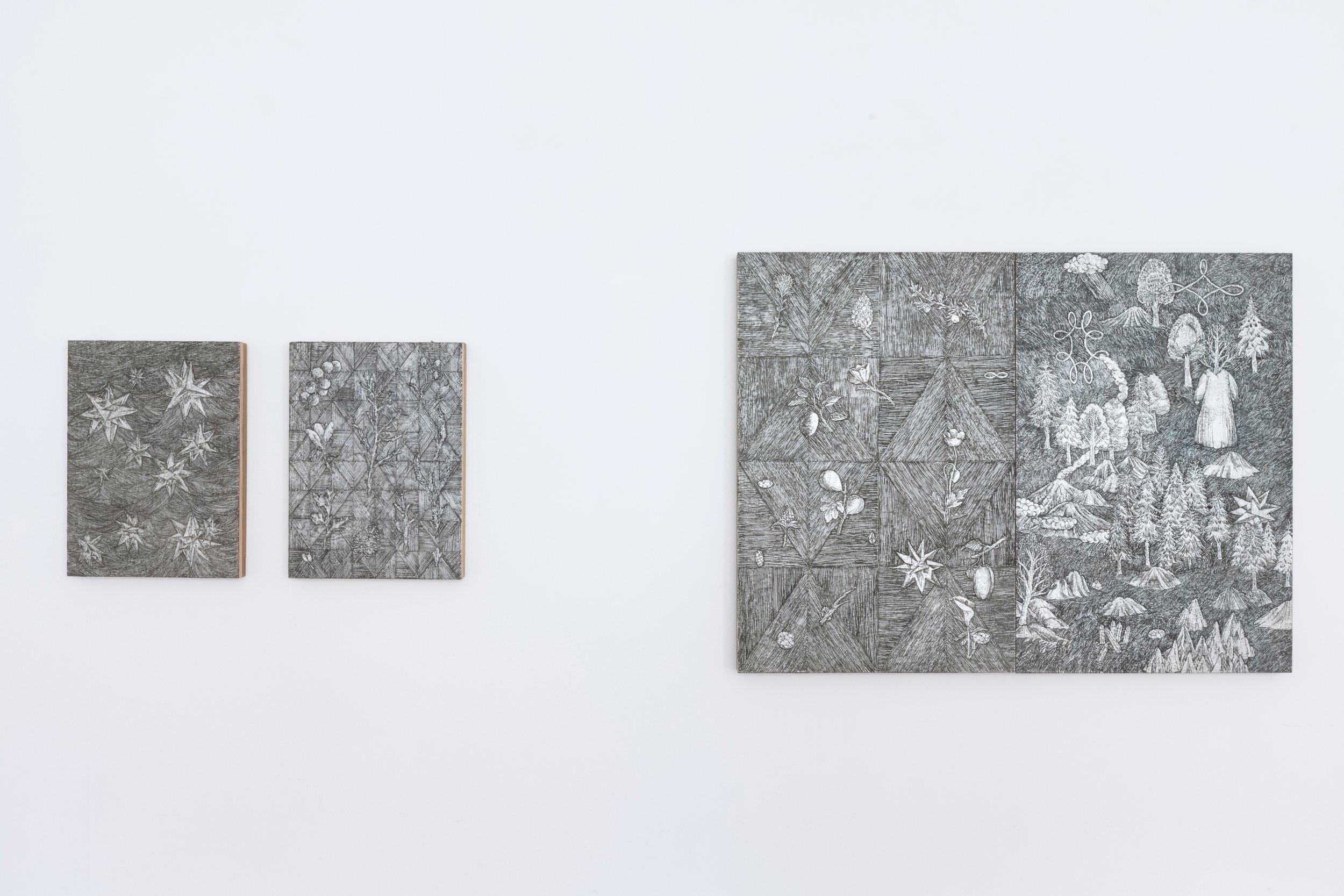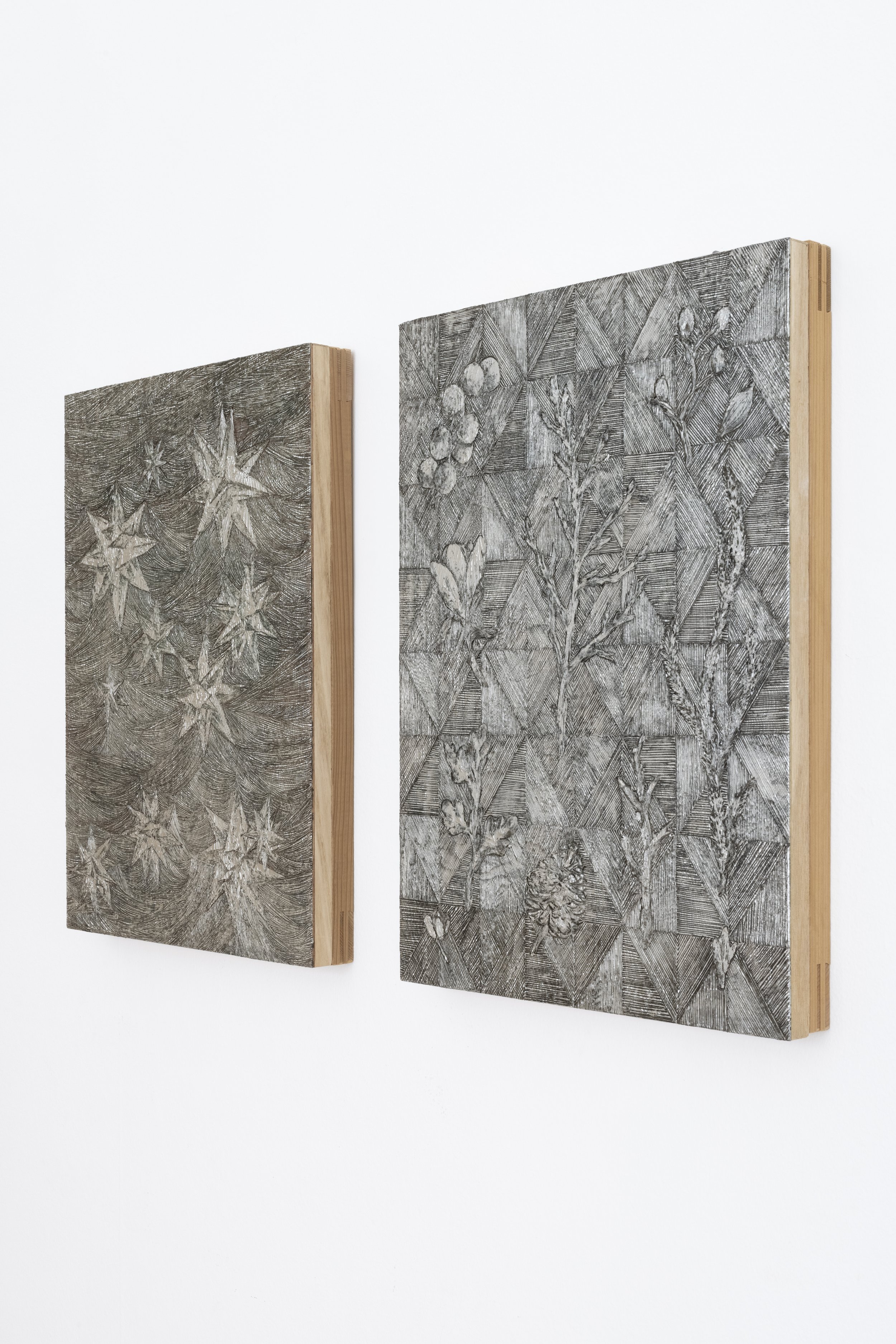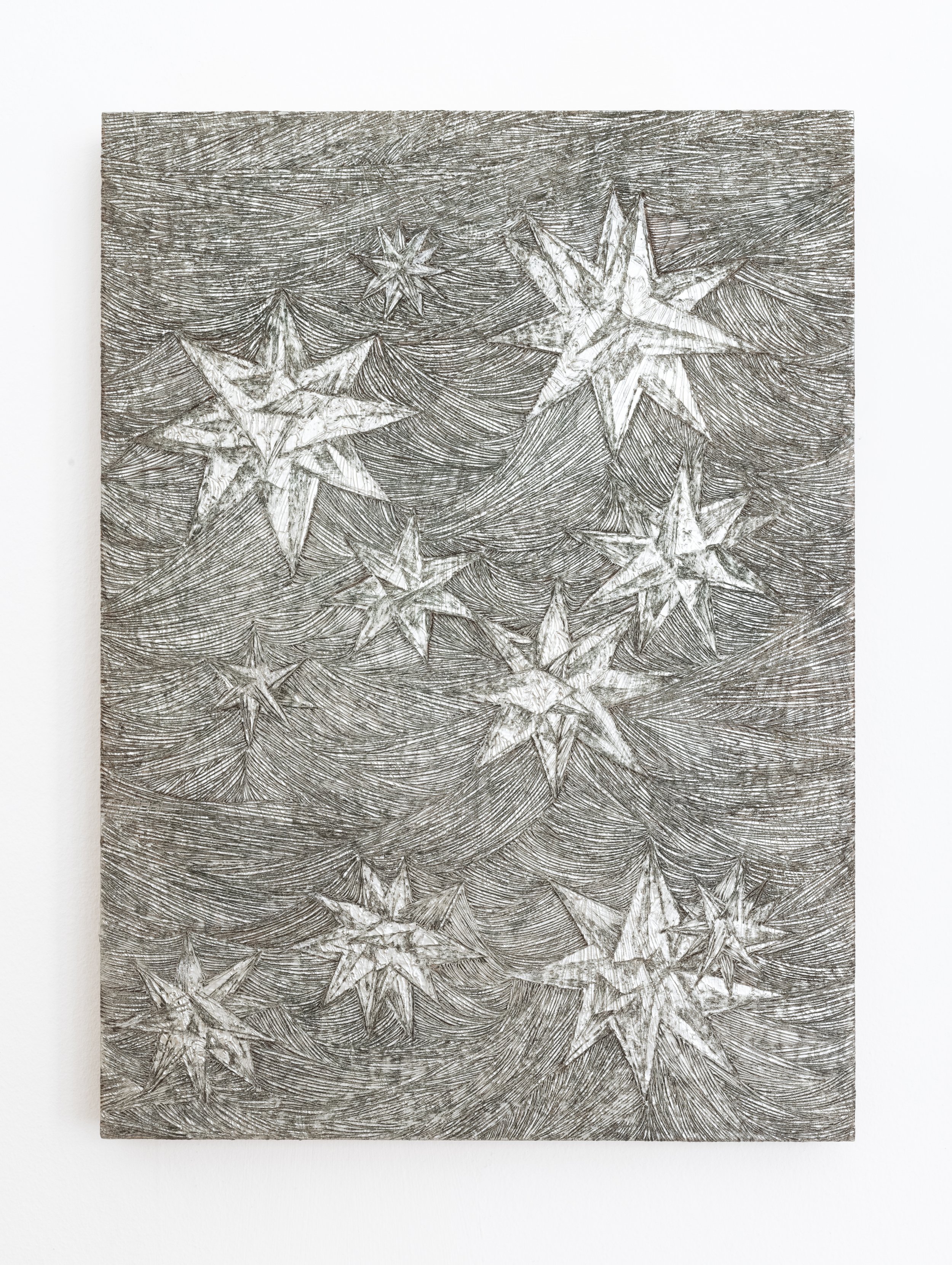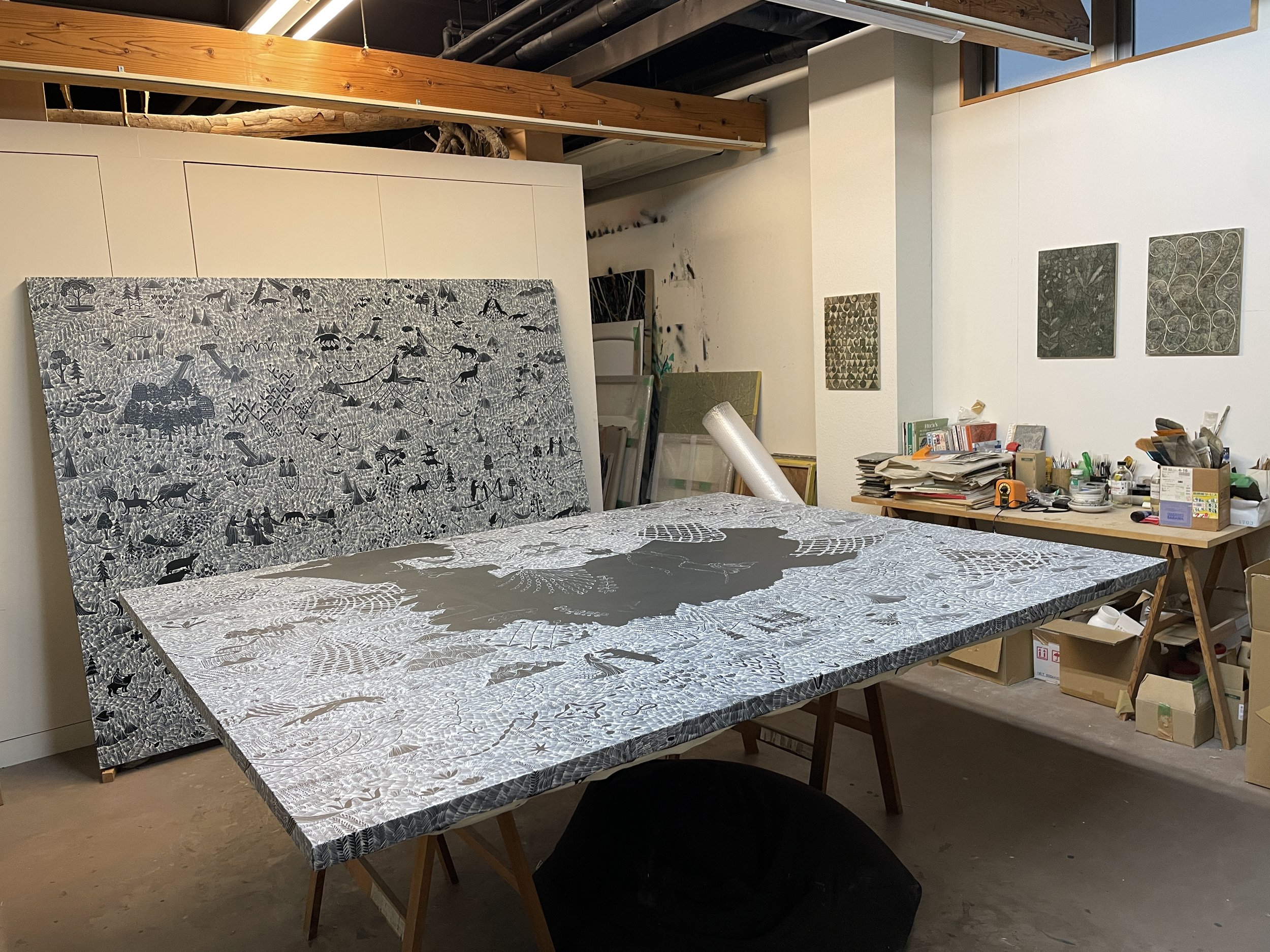Japanese artist Nana Funo on her botanical inspiration
Nana Funo in her studio. Photography by Taishi Nishi.
As part of ‘New Nature’ exhibition at PATERSON ZEVI gallery London, curated by Julia Tarasyuk and organized with IKEBANA projects, we spoke with the Japanese artist Nana Funo about her botanical carvings in paint and Ikebana inspiration from her mother. The exhibition marks Nana Funo’s debut outside of Asia.
Nana Funo (b. 1983, Shizuoka Prefecture, Japan) graduated from Osaka University of Arts, Japan (BFA) in 2006 and completed the Graduate Kyoto City University of Arts, Kyoto, Japan (MFA) in 2008. She currently lives and works in Shizuoka, Japan.
Nana Funo’s dense images are delicately and laboriously constructed. Each of her works is built up in a complex series of layers. She starts with applying muted tones of acrylic on a wooden panel, carves her narrative with a heated pen, applies gesso to create gradation, and masks the surface in another layer of acrylic paint. The final work has both depth and kaleidoscopic texture. The subjects of Funo’s works appear fantastical, but are in fact based on her day-to-day experiences and moods; recurring motifs include figures, animals, flora and fauna, and writing.
‘New Nature’, PATERSON ZEVI, London, on view until 15 July 2022. To book an appointment or for further information, please email info@patersonzevi.com
Nana Funo, Leaves That Smell Good, 2019, acrylic on panel. On view at PATERSON ZEVI gallery London until July 15th. Photography by Will Amlot.
Your work presents a complex layer of botanical motifs. What interests you in flowers and plants?
Painting flowers and plants as motifs has opened my eyes to how the “thick, green masses” – as I used to perceive them – comprise veins of venation on each uniquely shaped leaf, and how diverse these shades of green are. It’s like the world comes into focus, from which beauty emerges. What I like about plants is how they don’t speak yet are still alive.
Please tell us about your unique technique reminiscent of ancient carvings. How was this idea of sculpting in paint born?
I’ve never been that interested in painting with a paintbrush. I would instead apply dye on canvas, paint using masking tapes, or wipe applied paint with cloths – Even with oil painting, I paint with thin lines rather than brushstrokes. This came about from wanting to paint like how I draw on paper with a ball-point pen, which is my favorite method of drawing. I have also tried scratching thick layers of paint with bamboo and reed pens, but my current painting method has the closest feel to drawing with a bull-point pen.
The color scheme of your work ranging from black to silver, is almost the opposite of what we can encounter in nature. Why have you chosen to work in this style?
It’s kind of a personal taste, but I don’t feel so comfortable with bright colors and when I do try, they tend to not sit so well. So just as I often dress in black, I keep coming back to the black and silver colors. In a formal sense, these contrasting colors also have the effect of bringing lines forward.
Nana Funo’s studio in Shizuoka, Japan.
Japanese culture has a very special relationship with nature, flowers and plants. Does it find reflection in your work?
I’m not sure if it’s specifically Japanese thing, but I do have a sense of awe toward nature. That is, nature is not merely beautiful but something scary at the same time. I think that’s also reflected in my work in some way, if not a directly.
Have you encountered Ikebana before? What do you think of this ancient practice and the way it becomes a modern artform today?
Despite my mum having a teaching certificate for a school of Ikebana called Isuzu Koryu, I haven’t had much exposure to Ikebana before. Even so, I can definitely see when she arranges flowers it comes out much more beautiful than when I try. I was also fascinated by this performance by a ceramic artist I’ve recently met – Shozo Michikawa – which was a collaboration between Ikebana and ceramic artworks. Ikebana sure is a tradition, but I strongly feel it’s also connected to our time.




Details of Nana Funo’s works currently on view at PATERSON ZEVI gallery in London. Photography by Will Amlot



